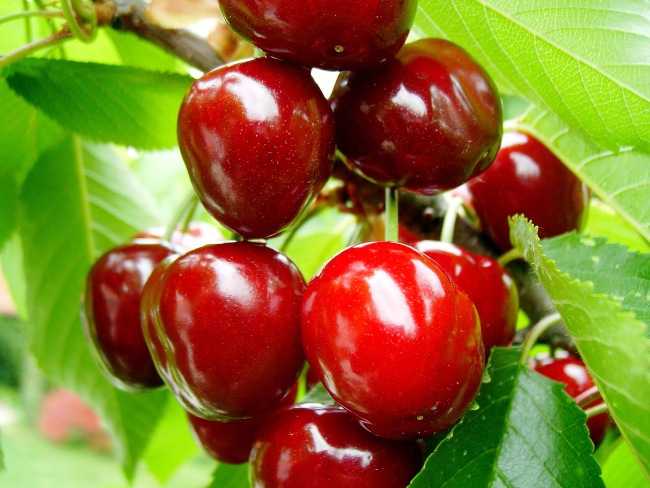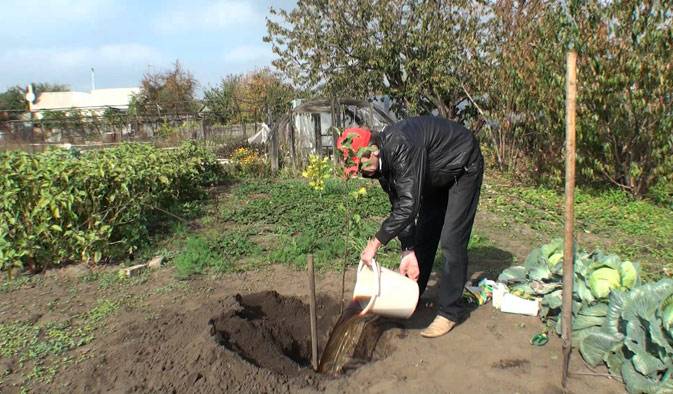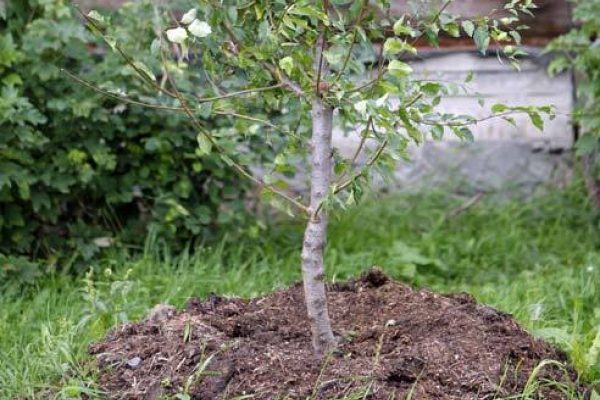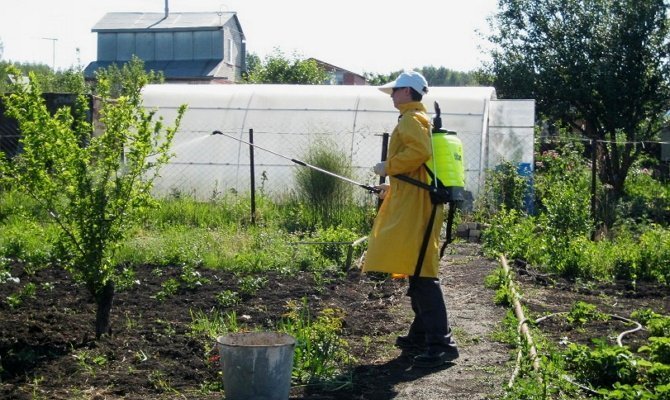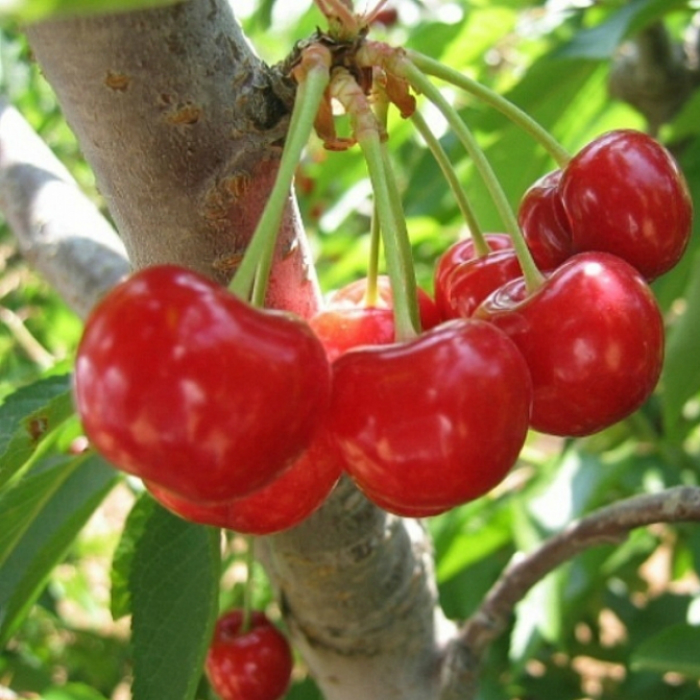Content:
Cherry Turgenevka belongs to the most famous and high quality varieties cultivated by Russian gardeners. The variety stands out for its excellent marketability and taste, winter hardiness of wood, relative resistance to fungal diseases.
Description of the cherry variety Turgenevka
Cherry Turgenevskaya was bred in VNIISPK (Orel). Obtained as a result of free pollination of the Zhukovskaya variety.
Plants of a tree-like variety, they have a reverse-pyramidal, slightly raised crown of medium density. Trees reach a height of 3 m, fruits ripen on bouquet branches.
Fruits weighing about 5 g, have a wide-heart shape, dark red color and pulp, which is characterized by juiciness, density, sweet and sour taste. The bone is separated well. The fruits contain: soluble solids - 16.2%, sugars - 11.2%, acids - 1.51%, ascorbic acid - 13.2 mg / 100 g, P-active substances - 892.7 mg / 100 g ...
Flowering occurs in the second decade of May. The fruits ripen at the normal time for cherries - in the first half of July. Begins fruiting in 4-5 years.
The yield is 6.1 t / ha (9.2 kg / tree), the maximum reaches up to 2 t / ha (30 kg / tree). Winter hardiness of wood is relatively high, in flower buds it is average. Medium resistance to fungal diseases such as coccomycosis and moniliosis.
The variety is characterized by partial self-fertility, i.e. partially pollinated with its own pollen, does not depend so much on the proximity of pollinating varieties as self-infertile varieties.
Features of cultivation
To get a good harvest, you need to consider several important points.
Site selection
To grow Turgenevka, you should choose a site on a hill where there is a good outflow of cold air. These requirements are met by slopes with a steepness of no more than 7-8º. On the plains, the variety is more likely to fall under frost, despite its relative resistance to negative temperatures.
Lowlands, hollows, forest glades with poor aeration are completely unsuitable for growing Turgenevka. The western, northwestern and southwestern slopes are most favorable for the cultivation of Turgenevka in most regions of Russia.
Soil preparation
The soil on the site for growing Turgenevka is prepared in advance, no later than the fall of the year preceding planting. It is dug to the depth of a shovel bayonet. Before digging, organic fertilizers (rotted manure or humus) are scattered on each square meter of the soil surface at the rate of 4-6 kg, in the middle zone of fruit growing it is possible up to 10 kg, and mineral fertilizers, in particular phosphorus 20-25 g, potassium 15-20 g ...
In acidified areas, lime is also added (200-600 g / m²), depending on the acidity of the soil. The pH value should be 6.5-7.0.
Landing
The best time to plant Turgenevka is early spring, that is, immediately after the soil thaws. Delay in planting dates negatively affects the survival rate of seedlings and the development of plants, especially in the first 2 years of life.
Planting pits can be prepared in the fall, with a diameter of 80 cm and a depth of 50-60 cm.1-2 buckets of organic fertilizers (rotted manure or compost) are introduced into the prepared pits, mixed with the top fertile layer of earth extracted during the digging of the pit and left until spring. In spring, 300-400 g of superphosphate and 100-120 g of potassium sulfate (or 1 kg of wood ash) are added and the whole thing is mixed again.
For planting, use 1-2-year-old seedlings with a developed root system and, preferably, a branched crown. Before planting, the roots of the seedlings are recommended to be placed in water for at least a few hours, and immediately before planting, dipped in a creamy soil mash, to which Aktara (10 g per 10 l of water) has been added to protect the roots from damage by the beetle larvae.
After planting, it is imperative to water the seedlings with 20 liters of water until the planting pit is completely saturated, and the surface of the pit should be mulched with peat, sawdust or earth. Repeat watering after planting in dry weather as the soil dries up.
If, before planting Turgenevka, the soil was well filled with organic and mineral fertilizers, they are often planted without digging holes first. To do this, a hole is dug from the northern side of the installed stake, corresponding to the volume of the root system, holding the seedling, the roots are covered with earth, carefully trampling it from the end of the roots to the trunk. A hole is formed along the edges of the planting pit with sides up to 10 cm high, poured with 20 liters of water and mulched.
The planted plants must be tied to the stakes with a hemp twine in the "eight" method for greater stability. The root collar of seedlings after subsidence of the earth should be at the level of the soil.
In recent years, due to favorable weather conditions in the fall, autumn planting of cherry varieties, including Turgenevka, has become widely used. But it is very important to take into account that the autumn planting should be carried out early, in the central region - no later than September or early October. Planting is completed 20-30 days before the soil freezes, so that the plant has time to adapt. Still, it is best to postpone the planting of Turgenevka until spring.
In order to preserve the seedlings until spring, they need to be dug into the so-called winter ditch. To do this, a trench is dug with a depth of about 30-35 cm in the direction from west to east, from the south side, the wall of the trench is made inclined (at an angle of 30-35 °) and a row of seedlings is placed in it with crowns to the south to avoid sunburn on the boles, and covered with earth. At the same time, the soil is tightly but carefully trampled so that there are no voids between the roots and stems through which cold air can penetrate.
The dug-in seedlings are watered, and if the autumn is dry and long, the watering is repeated.
The soil is loosened for 2-3 years after planting to a depth of 8-10 cm after rains and irrigation, and in the zone of the near-trunk strip - no deeper than 5-6 cm, so as not to damage the root system. Weeds are destroyed during the entire growing season, preventing the formation of seeds.
Fertilizers
Turgenevka is a cherry, responsive to the introduction of organic and mineral fertilizers. However, untimely application or overestimation of fertilizer doses can cause continuous growth of shoots, and this is very undesirable in autumn, since young, non-lignified shoots are severely damaged by low temperatures, and the winter hardiness of the tree is sharply reduced.
Humus (rotted manure) and various composts (organic-mineral mixtures) are used as organic fertilizers. Nitrogen, phosphorus, potash or complex fertilizers are used as mineral fertilizers.
Nitrogen and complex fertilizers are applied in the spring for the first loosening in a dry or liquid state.Phosphorus and potash fertilizers are applied in the fall for digging the soil. The application of organic and mineral fertilizers can be alternated. One year to apply organic fertilizers, in another year - mineral fertilizers, with the exception of nitrogen fertilizers, which are applied annually as top dressing.
Liquid nitrogen and organic fertilizers (infusion of mullein or bird droppings) are more efficiently applied to circular grooves (grooves) 15-20 cm deep, dug around trees 40-50 cm apart or into holes located along the periphery of the crown. Foliar top dressing on leaves with urea (40-50 g per 10 l of water) in the first half of summer is very effective, which can be combined with preparations for
Watering
Throughout the summer, young plantations of Turgenevka must be watered at least 3-4 times per season at the rate of 20-30 liters per tree, depending on the amount of precipitation. With a lack of moisture, mature trees also need watering.
In stable dry weather, watering is carried out immediately after flowering, then 3-4 weeks after flowering. If the weather is dry and warm in autumn, for better wintering, autumn water-charging irrigation is carried out in late September-early October. Water consumption rate for irrigation is 50-60 liters per tree.
Pruning
Turgenevka pruning is carried out starting from the moment of planting and throughout the entire period of life. Within 5-6 years from the moment of planting, the crown and trunk are formed. Trees are formed with a low stem: in the middle lane - 30-40 cm, to the south - up to 50 cm. 5-6 skeletal branches are left in the crown. The distance between the skeletal branches is approximately 10-15 cm. The central conductor should be 15-20 cm higher than the ends of all skeletal branches.
The older the tree, the more it needs pruning. Basically, it comes down to removing dry, diseased, broken and rubbing branches against each other. The crown is thinned out, for this, the branches growing inside the crown are cut out, and the growths are also shortened. Annual growths (up to 1 m) are shortened by 1/3 of the length with transfer to lateral branches, in order to tie more fruit formations.
Harvest
Harvesting of Turgenevka is carried out as the fruit ripens. The variety does not belong to the category suitable for mechanized harvesting, therefore, in most cases, it is harvested using the traditional manual method.
Advantages and disadvantages
The positive characteristics of Turgenevka include the relatively high winter hardiness of wood. This favorably distinguishes it from most varieties of sweet cherries, as well as from such varieties of cherries as Bystrinka, Gurtyevka, etc. The taste qualities of the fruits distinguish Turgenevka favorably from the variety so widespread in our country as Shokoladnitsa.
The weight disadvantage of Turgenevka is the insufficient winter hardiness of flower buds. According to this indicator, it is inferior to such varieties as Bystrinka, Livenskaya, Lyubskaya, etc.
If you follow all the rules of agricultural technology, a good harvest is guaranteed.
